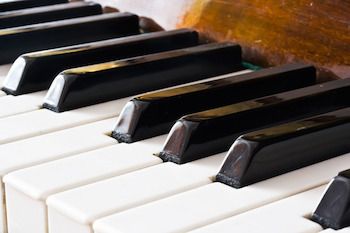What’s the first sign you have a problem with your piano? Usually it starts with the keys.
One of the most common calls we receive is for us to repair a broken key. Broken keys can mean a variety of things to different people, usually we find a “broken” key usually has one of two problems:
- When the key is pressed, it won’t come back up
- When the key is pressed, the note doesn’t play
In either case, fixing the problem could involve a variety of things.

In a newer piano, the most common reason why a key sticks is when the felt bushing binds up against the front rail pin. This will most likely occur during more humid times of the year when the felt swells from the moisture. A piano technician has a tool that can easily compress the felt back into its original shape.
In older pianos, there may be several causes.
- Sometimes the hammers are too close together and rub against one another, causing a note not to play.
- Sometimes the hammer shank breaks.
- Sometimes the key itself can crack at the balance rail hole.
These are all common problems, ones we work with on a regular basis.
Keep in mind that some piano key problems are not problems with the piano at all. In some cases, an animal or a human was involved. I’ve found pencils, toys or other objects inside the piano lying across the backs of the keys. And I’ve found small items wedged between the keys.
While a broken key can signify a variety of things, there’s only one way to tell for sure: get inside the piano and discover where the problem lies. As trained piano technicians, we can fix broken keys, tune your piano so it plays at its optimal pitch, and provide you with full service for all of your piano needs.

